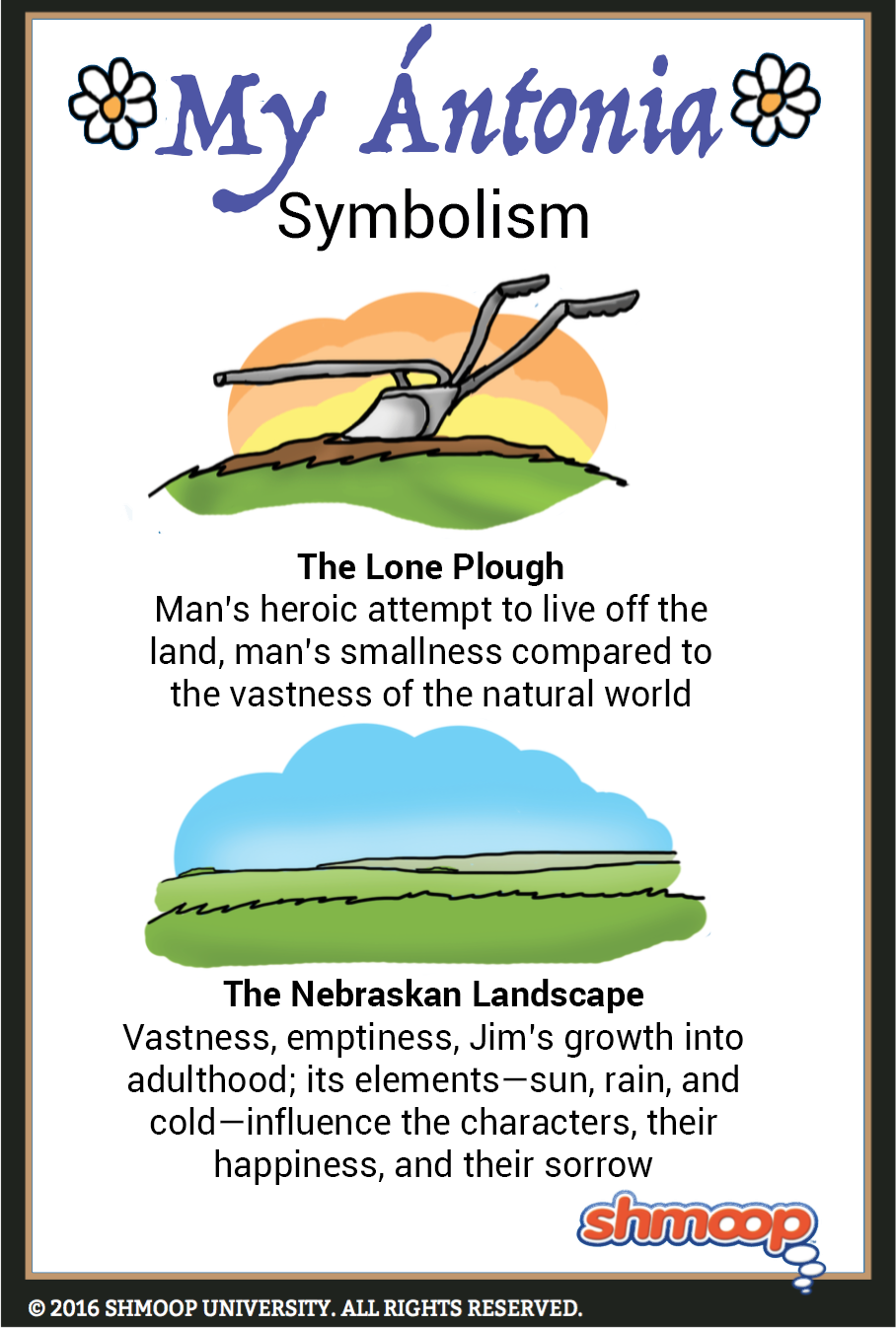Symbolism, Imagery, Allegory

(Click the symbolism infographic to download.)
Let's take a look at the text before diving into a description of this symbol.
Presently we saw a curious thing: There were no clouds, the sun was going down in a limpid, gold-washed sky. Just as the lower edge of the red disk rested on the high fields against the horizon, a great black figure suddenly appeared on the face of the sun. We sprang to our feet, straining our eyes toward it. In a moment we realized what it was. On some upland farm, a plough had been left standing in the field. The sun was sinking just behind it. Magnified across the distance by the horizontal light, it stood out against the sun, was exactly contained within the circle of the disk; the handles, the tongue, the share--black against the molten red. There it was, heroic in size, a picture writing on the sun.
Even while we whispered about it, our vision disappeared; the ball dropped and dropped until the red tip went beneath the earth. The fields below us were dark, the sky was growing pale, and that forgotten plough had sunk back to its own littleness somewhere on the prairie. (1.15.50-51)
A plough on its own can be seen as the symbol of man's attempt to live off the land. The plough is a quintessential farming tool, so we can generalize it to represent farming altogether. Just as there is something "heroic" about this plough, there is, too, something heroic about the farmers who make their living off the Nebraskan lands. This passage reminds us that, however "heroic" man's attempts, he is still quite small and insignificant in the grand scheme of the natural world. Just as Jim often feels swallowed up by the endlessly grassy plains, so the plough sinks "back into its own littleness," and so man is ultimately no match for the grandeur and beauty of the natural world.